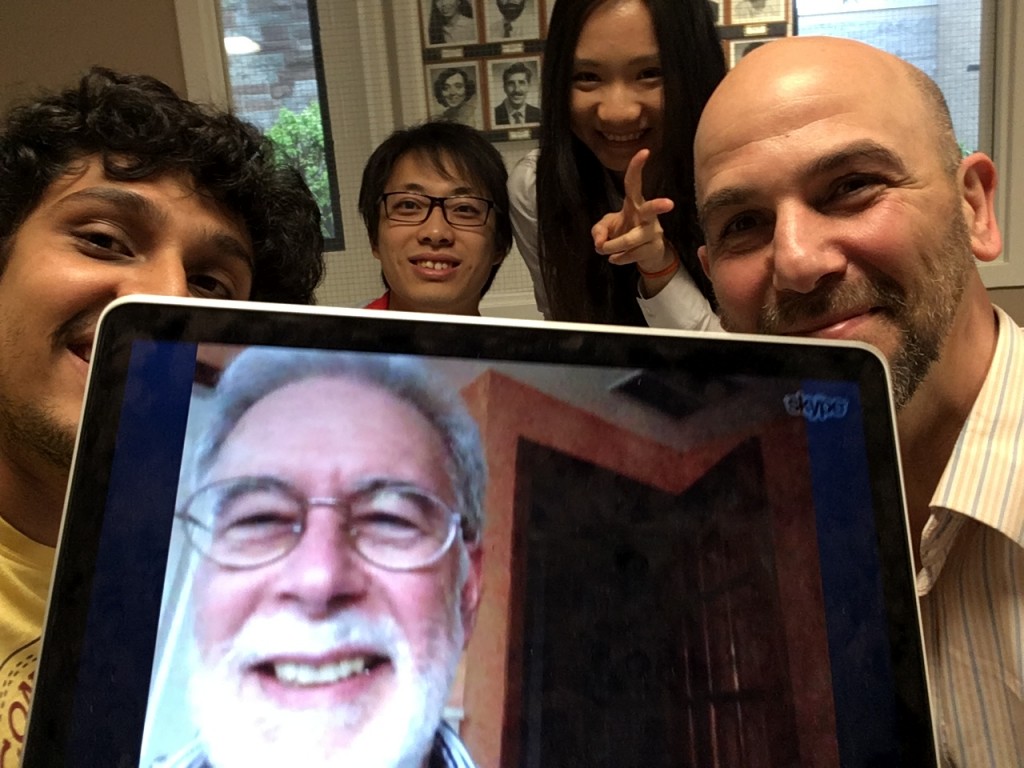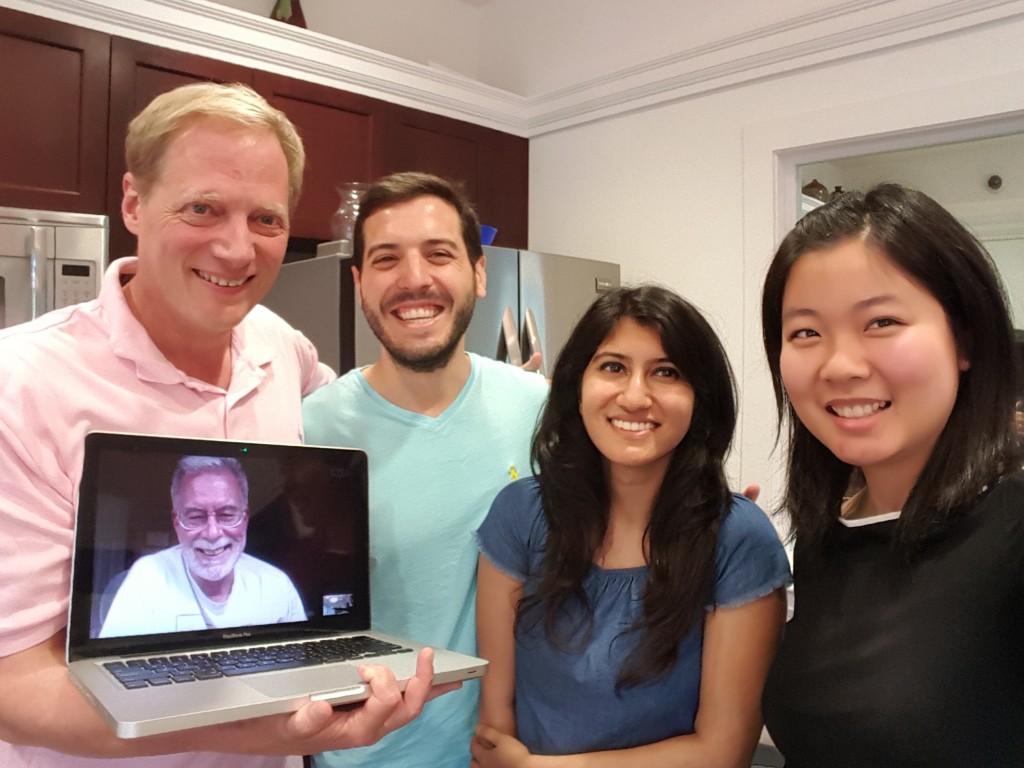I started my professional life after grad school at Berkeley as a programmer in 1975. For the next ten years, programming was chiefly what I did. Then I moved into project, product, and program management for software and hardware products for the next 25+ years, and did not write a line of code. In June 2013, the day before I left for Reunion, I was laid off due to financial cutbacks in the small company I was working for. Rather than search for a new program management job at the age of 62 – a seemingly hopeless task – I decided, in the very moment of being laid off, to pursue a different dream.
I had always been interested in history since I was a little kid. In 2008, I conceived of a web-based history app that would enable people with very minimal technical skills to create map-based historical animations such as battles, explorations, migrations, fires, epidemics, etc. I made a prototype using Google Earth, but using that product was too cumbersome and error-prone, and required too much technical skill, for my intended student audience. So in 2013, I decided to go back to my programming roots and teach myself modern web development technologies. It took about eighteen months for me to develop the web-based History in Motion. People from 25 countries and 40 US states have created accounts, and in the past school year eight schools in the US used it to develop projects. I’ve embedded below a video showing Cornell’s physical expansion from 1865 – 2015 that I made using the tool.
One of the things I learned along the way was that I really enjoyed the process of programming, far more than I did when I wrote my first CUPL program in 1969. So in 2015 I taught myself to develop iOS apps and made an iPad version of History in Motion.
It was at this point, in February 2015, I contacted Dr. Bruce Kornreich DVM ’92, PhD ’05, the associate director of the Cornell Feline Health Center. (My wife and I have had cats as pets continuously since 1975 and have been supporters of the Center since we stumbled upon it at our 20th Reunion. We had met Dr. Kornreich at our 40th Reunion when we delivered some blankets my wife had crocheted for cat cages.) I asked Bruce if he or his colleagues had any ideas for apps that would benefit cat owners, veterinarians, or feline health researchers. He was immediately enthusiastic and had a number of ideas. We met during Charter Day Weekend in April, and again when I was in Ithaca that July, and nailed down many of the details of an app to help cat owners manage weight loss for their overweight cats.
In August, it was clear that I didn’t have the time to follow through on the app (I had gotten a job as a web developer in May), so I mentioned to Bruce that I knew there was a course in the Computer Science department where the students did projects suggested by other units of Cornell; if he was so inclined, I would look into that and try to get a student team. Again, Bruce was enthusiastic. Through my inquiries, I got connected with Professor Gilly Leshed in the Information Science department. Prof. Leshed runs the Master of Professional Studies Program in IS, and was intrigued by the project. As a result, we had a three-person student team work on the first half of what we called FitCat during the Spring 2016 semester. We had another student team continuing development of the app in the Fall 2016 semester. Two of those students, and a sophomore Computer Science major are finishing the app this spring. My role, besides being the matchmaker, is to sit in on the weekly project calls with Bruce and the students, review the code and documentation, provide feedback on the user experience, and make sure the requirements are clear to the students and the product owner (Bruce) is happy with the results.

The new connection between Bruce and Gilly led to an interesting but unrelated piece of work. Another professor in the Vet College was studying gait in dogs that have had hip replacement surgery, and wondered if she could get software developed to enable her to compare their gaits before and after surgery. Bruce put her in touch with Gilly, who got some students working on this project during the summer to get an Xbox game controller to recognize dog motion, as opposed to human motion.
Meanwhile, during my July 2016 visit to campus, my wife and I got a tour of Professor Brian Wansink’s Food and Brand Lab. Prof. Wansink’s research interest is in the visual, social, and environmental cues that affect our food decisions – to eat or not eat, what and when to eat, etc. His book Mindless Eating is a fascinating discussion of these factors(*). In the discussion with the Lab’s associate director, it turned out that Prof. Wansink was also looking for a student to develop an app based on his Slim By Design scorecard, and had not had any success so far. So I spoke to Prof. Leshed that same day, and we got a student team working on that app last fall, with a second team this semester extending the app. This app will enable consumers to rate supermarkets, restaurants, and cafeterias as to the degree to which they promote healthy eating, using the scorecards developed by Prof. Wansink.

My connection with the Vet College led to my being invited to be a mentor at the world’s first Animal Health Hackathon in Ithaca last month. I’m proud to say that Luis ands Saloni from last fall’s Slim By Design team were members of the Retriever team that won best in the hardware segment and best in show.
I have no idea where these apps will ultimately go (to the App Store, I hope!), or how many more I may get involved with, but it’s fun working with students and professors, and I am delighted to have been the means of connecting departments in different colleges that needed each other but would otherwise never have discovered each other.
(*) I have to share one story from the Food and Brand lab. Some of their work deals with halo effects that predispose us to prefer one food choice over another. They decided to find out about the strength of Cornell as a brand among alumni. So they divided alumni into two groups and gave them ice cream to taste. Both groups were told they were taste-testing a new ice cream flavor, but one group was told, in addition, that the flavor was developed by Cornell food scientists, and it was scooped out of a Cornell Dairy tub. In fact, in both cases it was simply store-bought vanilla ice cream mixed with fish sauce (!). Neither group especially liked the “flavor,” but the group that thought it was a Cornell product liked it more than the control group. And astonishingly, the “Cornell product” group was willing to pay, on average, eight times as much per pint for a product they didn’t even like!